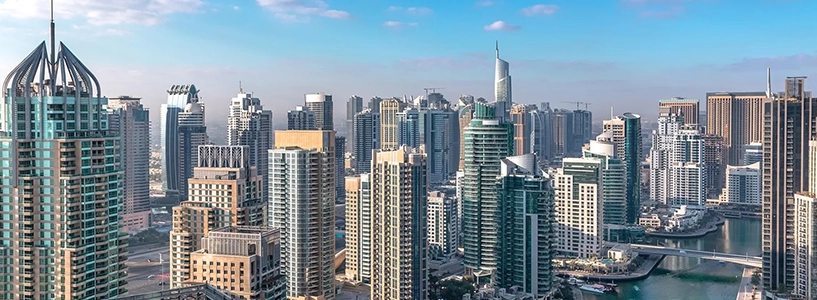Judicial Overreach Vs. Legislative Intent: The Debate Over Article 142
1. Introduction
Under Article 142 of the Constitution of India, the Supreme Court is empowered to pass any order to secure ‘complete justice’ in the matters before it. While created to handle exceptional cases where current laws fail to address a situation, this provision has served to create a debate as to its boundaries and just how far courts may go with it. The word ‘complete justice’ is not defined; thus, the Court has enormous room for discretion in its interpretation and application.
With the drafting of Indian Constitution giving the Supreme Court an extraordinary tool, Article 142, to ensure complete justice in any matter before it, when drafting the Constitution, the framers of the law had a petulant temperament regarding the Supreme Court. In recent years however, this clause has come to serve as a superpower rather than as a safety valve, creating fear in that it is being used as an instrument of judicial overreach and thus a threat to constitution. Article 142 is now caught up in a serious constitutional debate between the Tamil Nadu Governor vs State Government standoff and collegium appointment deadlocks.
2. What is Article 142?
Article 142 allows the Supreme Court at its core to:
“Pass any decree or make any order as is necessary for doing complete justice in any cause or matter pending before it”.
3. Constitutional Provision
- Article 142(1):Enables the implementation of making enforceable decrees or orders so that complete justice can be met.
- Article 142(2): Authorizes the Court to enforce attendance, production of documents, and penalty for violating the Court’s process all through India.
It was originally designed as a panacea, to be a remedy to the gaps left by legislation, or to provide justice in places where law did not exist. Yet nowadays it is used in routine governance disputes, almost inevitably pitted against elected governments and executive offices.
4. Landmark cases
- Kesavananda Bharati Case (1973): Article 142 was used by the Supreme Court in the formation of the ‘basic structure doctrine’, to limit the powers of Parliament’s amendment of the constitution.
- Shah Bano Case (1985): It was an important use of Article 142 to grant alimony to a Muslim woman which gave rise to a large debate on personal law versus secularism.
- Vishaka Guidelines (1997): The Court invoked Article 142 and laid down guidelines against sexual harassment at the workplace.
- Bhopal Gas Tragedy: In this case, the Supreme Court used its plenary powers and stepped in and ordered for compensation to be given to victims of the deadly Bhopal Gas Tragedy.
- BCCI Reforms (2016): The Court initiated reforms in the Board of Control for Cricket in India, putting its nose into such a murky mess with the aim of transparency and or accountability.
5. The Tamil Nadu Bill Controversy
One recent case that prompted this debate is State of Tamil Nadu v. Governor of Tamil Nadu. The Tamil Nadu Legislative Assembly passed several bills between 2020 and 2023, including ones that stood to cut down on the Governor’s power in the appointment of Vice Chancellors of state universities. But Governor R.N. Ravi did not give his assent to these bills which resulted in a legislative impasse. The Supreme Court was brought to pass considering the inaction of state government and the state government was of the opinion that this inaction was unconstitutional.
The deadlock was dismissed by the Supreme Court invoking Article 142 on 8 April 2025. The Court held that the Governor’s failure to assent to the pending bills for a prolonged period of time was in error and asserted its powers to deem the pending bills to have received assent. The Court also required specific timelines for a gubernatorial response to future bills and made clear that indefinite delays are forbidden.
Judicial Overreach vs. Legislative Intent:
After reviewing the article titled “Supreme Court’s judicial overreach? Vice President joins experts with fierce criticism” published on India Today, I find myself in agreement with the concerns raised by Vice President Jagdeep Dhankhar and other legal experts regarding the Supreme Court’s use of Article 142 in the Tamil Nadu Governor case.
The Supreme Court’s decision to set deadlines for the President to clear Bills passed by state Assemblies and its use of Article 142 to clear 10 Bills passed by the Tamil Nadu Assembly without the approval of the Executive raises significant constitutional questions. Article 142 gives power to the Supreme Court to deliver ‘complete justice’, but in this case application of the above power appears to invite a distinction between the judiciary and the executive.
Vice President Dhankhar hit out at Article 142 as a ‘nuclear missile against democratic forces’, indicating the risk to democratic forces from such judicial interventions. In his earnestness, he insists that India[16] was never supposed to have a democracy in which the judges act as lawmakers, Executive and even as ‘super Parliament’. This is perfectly in line with a fundamental principle of separation of powers that our Constitution enshrines.
This is a system of checks and balances by which each branch has very clearly delineated roles. When the judiciary sets timelines on laws within its authority, and prescribes them, and when laws are passed without executive assent, it crosses the boundaries of distinct powers and challenges separation of powers. Even if these are done with good thoughts, they could set precedents that may be abused in a less beneficial context and erode principles of democracy.
Further, the frequent invocation of Article 142, the one that was once used for exceptional cases, indicates a shift, not smooth, to judicial activism that does not always uphold with the spirit of the Constitution. The judiciary is an important agent in ensuring the exercise of rights and the delivery of justice but also has to exercise restraint so as to uphold the integrity of our democratic framework, that is to say. It is concerning that the frequency of Supreme Court’s invocation of Article 142 is increasing. The provision is meant for use when justice fails and in doing so could serve as the cause of an imbalance between the branches of the government. The judiciary’s role is to interpret the law, not to create or enforce it, and overstepping these boundaries can undermine democratic governance.
6. The Collegium Conflict: Another 142 Stretch
The Supreme Court had in 2015 struck down the National Judicial Appointments Commission and restored the collegium system. The Court threatened by invoking the Article 142, which would have its way enforced on all the appointments of the Centre, delaying appointments. By that time, the SC was openly saying:
“We may be compelled to use Article 142 if appointments are not acted upon.”
The result is that the President’s role of constitutional appointer of judges under Article 124 is undermined. True, what’s left is a rubber stamp presidency where judiciary will propose and enforce, no executive eye in the house.
7. Criticism
- Ambiguity and Lack of Clear Guidelines
I think Article 142 gives a lot of power to the judiciary but it does not spell out what power he can actually exercise. The Supreme Court has struggled to explain just what ‘complete justice’ means even though it hasn’t managed to stop it from being open to as much interpretation as possible. The lack of clarity makes it difficult for implementation of the Article in the latter instance; in other words, in many cases.
- Conflict with the Separation of Powers
A second concern lies in the possibility that the use of Article 142 would upset the balance between the legislature, executive and judiciary. The framers gave particular attention to separating powers between the legislative, executive, and judicial branches, and the imagination of such extraordinary powers was intended to be reserved for very exceptional occasions. The problem arises when the judiciary begins to handle issues that should, in principle, be handled by lawmakers.
- Risk of Judicial Overreach
Article 142, however seems to be used sometimes to fill legislative gaps as the judiciary oversteps its role. For example, the Supreme Court of banning the sale of liquor next to highway is a well-known example. The goal had been public safety, but the result had been unintended ones: many businesses did not fare well and consequently, jobs were lost. This indicates why even well aimed judicial actions often have enormous and adverse consequences.
Conclusion
Article 142 works both as an indispensable device and sometimes as a source of judicial ascendancy; it balances between justice and constitutional fidelity and is thus an imperious tool to be used mercifully. The Supreme Court stretches out its ‘complete justice’ through significant rulings, although to be debated what’s the limits of its ambit yet it bridged legislative voids. Where Article 142’s interpretive compass is still in the course of being nuanced, the need to scrutinise its application will continue as the judiciary refines its compass. This constitutional provision will continue to serve as a result of future adjudications as a judicious remedy, or with the imposition of recalibrated boundaries to preserve the principle of separation of powers. The outcome of this tension will determine whether India has strengthened or weakened towards its constitutional maturity.
LEGALLANDS assist in services related to International Dispute Resolution, Recovery Suits, Contract Conveyancing, Vetting Contracts, Corporate Services, Joint Ventures, Merger Acquisitions, Business Set Up and Management Services, Foreign Trade Policies, Immigration Services, Regulatory Compliances, Legal Compliances, Logistics Support, Trade Regulations, and many more. We also assist in Due Diligence, Risk Assessment etc. Feel free to connect with us at connect@legallands.com. For further information visit our website on www.legallands.com.
[1] Constitution of India, § 142.
[2] ‘Article 142 – Is the Judiciary Overstepping Its Limits to Do’.
[3] ‘Article 142 Of Indian Constitution And Its Relation To Judicial Activism And Judicial Restraint – PWOnlyIAS’ <https://pwonlyias.com/article-142-of-indian-constitution/> accessed 5 May 2025.
[4] ‘Explained | SC Decision on Tamil Nadu Governor’s Powers under Art. 200 of the Constitution’ <https://www.scconline.com/blog/post/2025/04/14/explained-sc-decsion-tamil-nadu-governor-powers-article-200-pocket-veto-sc-legal-news/> accessed 5 May 2025.
[5] Constitution of India, § 142 (1).
[6] Constitution of India, § 142 (2).
[7] Kesavananda Bharati v. State of Kerala, (1973) 4 SCC 225.
[8] Mohd. Ahmed Khan v. Shah Bano Begum, (1985) 2 SCC 556.
[9] Vishaka v. State of Rajasthan, (1997) 6 SCC 241.
[10] Union Carbide India Ltd. v. Union of India, (1986) 2 SCC 547.
[11] ‘To Make BCCI & State Associations Fall in Line, CoA Asks Supreme Court to Invoke Article 142 | Cricket News – The Indian Express’ <https://indianexpress.com/article/sports/cricket/to-make-bcci-states-fall-in-line-coa-asks-sc-to-invoke-article-142-4748108/> accessed 5 May 2025.
[12] NEXT IAS Current Affairs Team, ‘Article 142: The Supreme Power or Judicial Overreach?’ (19 April 2025) <https://www.nextias.com/ca/current-affairs/19-04-2025/article-142-supreme-power-or-judicial-overreach> accessed 5 May 2025.
[13] undefined and Insights Editor, ‘Article 142: The Supreme Power or Judicial Overreach?’ (INSIGHTS IAS – Simplifying UPSC IAS Exam Preparation, 19 April 2025) <https://www.insightsonindia.com/2025/04/19/article-142-the-supreme-power-or-judicial-overreach/> accessed 5 May 2025.
[14] ‘Supreme Court’s Judicial Overreach? Vice President Joins Experts with Fierce Criticism’ (India Today, 18 April 2025) <https://www.indiatoday.in/india/law-news/story/vice-president-jagdeep-dhankar-ignites-row-over-judicial-activism-versus-overreach-after-supreme-court-tamil-nadu-governor-judgment-2709337-2025-04-18> accessed 5 May 2025.
[15] Devi Varaprasad Romala, ‘Judiciary Legislative Function: Quo Vadis?’ (2021) 4 Issue 2 International Journal of Law Management & Humanities 1438.
[16] ‘Explained | SC Decision on Tamil Nadu Governor’s Powers under Art. 200 of the Constitution’ (n 4).
[17] ‘Has the Supreme Court Been Trigger-Happy with Article 142?’ (Supreme Court Observer) <https://www.scobserver.in/journal/has-the-supreme-court-been-trigger-happy-with-article-142/> accessed 5 May 2025.
[18] Shalini, ‘Judicial Activism Vis-a-Vis Judicial Overreach: A Critical Note in the Light of Doctrine of Separation of Powers’ (2023) 5 Issue 1 Indian Journal of Law and Legal Research 1.
[19] ‘The Long Arm of Article 142: Judicial Innovation or Constitutional Overreach? Critical Analysis of Tamil Nadu vs Governor Case – Law Trend’ (14 April 2025) <https://lawtrend.in/supreme-court-judicial-activism-overreach-separation-of-power/> accessed 5 May 2025.

Shekhar Mehra is a legal writer and researcher at LEGALLANDS LLP, specializing in corporate law, business structuring, regulatory compliance and post-incorporation governance. He regularly contributes in-depth articles and thought-leadership pieces focusing on entity formation, governance frameworks, cross-border compliance and emerging policy reforms — particularly for India-UAE trade & investment contexts. His work combines technical legal insight with practical business strategy, to guide entrepreneurs, in-house legal teams and advisers through today’s complex regulatory environment.





